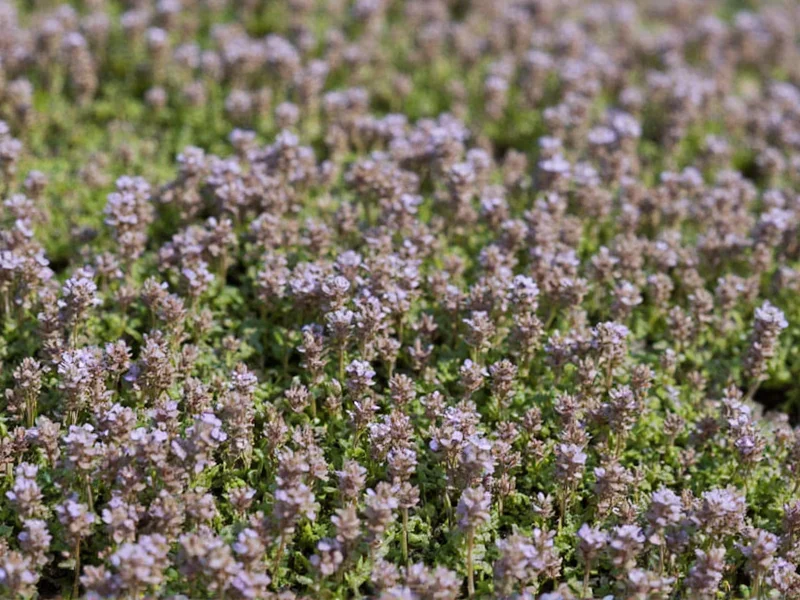For gardeners seeking a resilient, attractive ground cover that requires minimal care, creeping thyme elfin offers an exceptional solution. This miniature variety of creeping thyme stands out for its exceptionally compact growth habit, making it perfect for specialized landscaping applications where other ground covers might prove too vigorous.
Understanding Creeping Thyme Elfin Characteristics
Creeping thyme elfin distinguishes itself from standard creeping thyme varieties through several key characteristics. While most creeping thymes reach 2-3 inches in height, elfin thyme maintains a remarkably low profile of just 1-2 inches tall. Its growth habit forms an exceptionally dense mat that effectively suppresses weeds while creating a soft, textured appearance.
The botanical name Thymus serpyllum 'Elfin' indicates its classification within the wild thyme species, selectively bred for its miniature proportions. Unlike culinary thyme varieties, creeping thyme elfin serves primarily as an ornamental ground cover, though it shares the characteristic thyme fragrance when stepped on or brushed against.
Growing Requirements for Optimal Performance
Successful cultivation of creeping thyme elfin depends on understanding its specific environmental preferences. This plant thrives under particular conditions that mimic its natural Mediterranean habitat.
| Growing Factor | Optimal Conditions | Tolerance Range |
|---|---|---|
| Sun Exposure | Full sun (6+ hours daily) | Partial shade (may reduce flowering) |
| Soil Type | Well-draining sandy or gravelly soil | Clay soils with significant amendment |
| Soil pH | 6.0-8.0 (slightly acidic to alkaline) | 5.5-8.5 (survivable range) |
| Water Needs | Low once established | Drought-tolerant; avoid overwatering |
| Temperature | USDA zones 4-9 | Winter hardy to -30°F when established |
Planting Creeping Thyme Elfin Successfully
The best time to plant creeping thyme elfin depends on your climate zone. In northern regions (zones 4-6), spring planting allows plants to establish before winter. Gardeners in southern zones (7-9) can plant in either spring or fall, avoiding the intense summer heat.
When establishing creeping thyme elfin from plugs or divisions:
- Prepare soil by removing weeds and incorporating sand or gravel for drainage
- Space plants 6-8 inches apart for quicker coverage
- Water thoroughly after planting, then reduce frequency as plants establish
- Avoid mulching directly over plants, which can promote rot
For those wondering how to grow creeping thyme elfin between pavers, the process requires special attention. Clean joints thoroughly, fill with a sand-gravel mix, then insert small plants into the gaps. Keep newly planted thyme moist until roots establish in the joints.
Maintenance Requirements
One of the primary benefits of creeping thyme elfin care is its minimal maintenance needs. Once established, this plant requires little intervention:
- Watering: During establishment (first growing season), water when top inch of soil dries. Mature plants need watering only during extended droughts.
- Fertilizing: Generally unnecessary. Excessive nutrients promote leggy growth. If needed, apply light application of balanced organic fertilizer in spring.
- Pruning: Shear back by one-third after flowering to maintain compact form and prevent woody stems.
- Winter care: No special protection needed in hardiness zones. Avoid heavy snow accumulation which can damage plants.
Landscape Applications
The unique growth habit of creeping thyme elfin makes it suitable for specialized landscape applications where other ground covers might prove too aggressive. Consider these creative uses:
- Between stepping stones: Its low height and resilience to foot traffic make it perfect for filling gaps in pathways
- Rock gardens: Complements stones while cascading over edges attractively
- Container edging: Creates a fragrant, flowering border for pots and planters
- Erosion control: Stabilizes soil on gentle slopes where mowing is difficult
- Lawn alternative: In small, low-traffic areas where traditional grass struggles
When planning where to plant creeping thyme elfin, consider companion plants that share similar growing requirements. Sedums, dianthus, and other drought-tolerant perennials create harmonious combinations. Avoid pairing with aggressive spreaders that might overwhelm the delicate elfin thyme.
Benefits Beyond Beauty
While valued primarily for its aesthetic qualities, creeping thyme elfin offers several ecological benefits that enhance its appeal:
- Pollinator attraction: The summer blooms provide nectar for bees, butterflies, and other beneficial insects
- Drought resistance: Once established, it requires minimal irrigation, conserving water resources
- Heat tolerance: Performs well in hot, reflective conditions where other plants struggle
- Low maintenance: Eliminates need for mowing, reduces gardening labor significantly
- Erosion control: Dense root system stabilizes soil on slopes and in problem areas
Common Challenges and Solutions
Though remarkably resilient, creeping thyme elfin can encounter certain issues. Understanding these problems helps maintain healthy plantings:
- Root rot: Caused by poor drainage or overwatering. Solution: Improve soil drainage and reduce watering frequency.
- Fungal diseases: Occur in humid conditions with poor air circulation. Solution: Increase spacing and avoid overhead watering.
- Winter dieback: In severe winters, some foliage may brown. Solution: Trim damaged growth in spring; plants typically recover.
- Slow establishment: Creeping thyme elfin grows more slowly than some ground covers. Solution: Be patient; it fills in completely within 2-3 seasons.
Comparison with Other Creeping Thyme Varieties
Gardeners often wonder how creeping thyme elfin differs from other popular varieties. While all creeping thymes share drought tolerance and low growth habits, key distinctions exist:
- Elfin vs. Pink Chintz: Elfin maintains a tighter, lower profile (1-2" vs. 2-3") with smaller leaves
- Elfin vs. White creeping thyme: Elfin produces pink-lavender flowers rather than white
- Elfin vs. Red creeping thyme: Elfin has more delicate growth habit and lighter flower color
- Elfin vs. Mother of Thyme: Elfin is significantly smaller and more refined in appearance
For gardeners seeking the most compact, refined creeping thyme option, elfin thyme represents the pinnacle of miniature development within this species. Its specialized growth habit makes it particularly valuable for detailed landscaping applications where precision matters.











 浙公网安备
33010002000092号
浙公网安备
33010002000092号 浙B2-20120091-4
浙B2-20120091-4